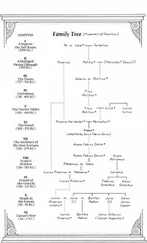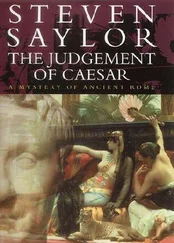Steven Saylor - The Seven Wonders
Здесь есть возможность читать онлайн «Steven Saylor - The Seven Wonders» весь текст электронной книги совершенно бесплатно (целиком полную версию без сокращений). В некоторых случаях можно слушать аудио, скачать через торрент в формате fb2 и присутствует краткое содержание. Год выпуска: 2012, Издательство: Macmillan, Жанр: Исторический детектив, на английском языке. Описание произведения, (предисловие) а так же отзывы посетителей доступны на портале библиотеки ЛибКат.
- Название:The Seven Wonders
- Автор:
- Издательство:Macmillan
- Жанр:
- Год:2012
- ISBN:нет данных
- Рейтинг книги:4 / 5. Голосов: 1
-
Избранное:Добавить в избранное
- Отзывы:
-
Ваша оценка:
- 80
- 1
- 2
- 3
- 4
- 5
The Seven Wonders: краткое содержание, описание и аннотация
Предлагаем к чтению аннотацию, описание, краткое содержание или предисловие (зависит от того, что написал сам автор книги «The Seven Wonders»). Если вы не нашли необходимую информацию о книге — напишите в комментариях, мы постараемся отыскать её.
The Seven Wonders — читать онлайн бесплатно полную книгу (весь текст) целиком
Ниже представлен текст книги, разбитый по страницам. Система сохранения места последней прочитанной страницы, позволяет с удобством читать онлайн бесплатно книгу «The Seven Wonders», без необходимости каждый раз заново искать на чём Вы остановились. Поставьте закладку, и сможете в любой момент перейти на страницу, на которой закончили чтение.
Интервал:
Закладка:
Antipater gave the driver a coin for his trouble, then remounted, and we resumed our slow, steady progress toward the shimmering smudge on the horizon.
I cleared my throat. “What makes those old bricks so valuable? And why did the Babylonians build their walls from bricks in the first place? I should think any proper city wall would be made of stone.”
The look Antipater shot at me made me feel nine years old rather than nineteen. “Look around you, Gordianus. Do you see any stones? There’s not a quarry for miles. This part of the world is completely devoid of the kind of stones suitable for constructing temples and other buildings, much less walls that stretch for miles and are so wide that chariots can ride atop them. No, except for a few temples adorned with limestone and bitumen imported at great expense, the city of Nebuchadnezzar was constructed of bricks. They were made from clay mixed with finely chopped straw, then compressed in molds and hardened by fire. Amazingly, such bricks are very nearly as strong as stone, and in the ancient Chaldean language the word for ‘brick’ and ‘stone’ is the same. They can’t be carved like stone, of course, but they can be decorated with colored glazes that never fade.”
“So the famous walls of Babylon were built by-” I hesitated over the difficult name.
“King Nebuchadnezzar.” Antipater made a point to enunciate carefully, as he had when speaking to the cart driver. “The city of Babylon itself was founded, at least in legend, by an Assyrian queen named Semiramis, who lived back in the age of Homer. But it was a much later king, of the Chaldean dynasty, who raised Babylon to the height of its glory. His name was Nebuchadnezzar and he reigned five hundred years ago. He rebuilt the whole city on a grid design, with long, straight avenues-quite different from the chaos you’re accustomed to in Rome, Gordianus-and he adorned the city with magnificent temples to the Babylonian gods, chief among them Marduk and Ishtar. He constructed a huge temple complex called Etemenanki -the Foundation of Heaven and Earth-in the form of a towering, seven-tiered ziggurat; some say the ziggurat rivals the pyramids of Egypt in size and should itself be numbered among the Seven Wonders. For the delight of his Median queen, who was homesick for the mountain forests and flowery meadows of her distant homeland, Nebuchadnezzar built the Hanging Gardens, a paradise perched like a bird’s nest high above the earth. And he encircled the whole city with a wall seventy-five feet high and thirty feet wide-wide enough for two chariots to meet and pass. The walls were fortified with crenellated battlements and towers a hundred feet tall, and the whole length was decorated with patterns and images in blue and yellow, so that from a distance the Babylon of Nebuchadnezzar shimmered like baubles of lapis strung upon a necklace of gold.”
He gazed dubiously at the horizon. The smudge continued to grow, but looked more like a daub of mud than a jewel-though it seemed to me that I was beginning to glimpse a massive object that rose above the rest of the smudge and shone with various colors. Was it the ziggurat?
“What happened to Nebuchadnezzar’s empire?” I said. “What happened to his walls?”
“Empires rise, empires fall-even the empire of Rome, someday…” Even here, far from Rome’s influence, he spoke such words under his breath. “Just as the Assyrians had fallen to the Chaldeans, so the Chaldeans fell to the Persians. A hundred years after the death of Nebuchadnezzar, Babylon revolted against Xerxes, the same Persian monarch who foolishly imagined he could conquer Greece. Xerxes had more success with Babylon; he sacked the city and looted the temples. Some say he demolished the great walls, destroying them so completely that hardly a trace remained-only a multitude of glazed bricks, coveted by collectors across the world. A hundred years later, when Alexander advanced on the city, the Babylonians offered no resistance and came out to greet him, so perhaps indeed they no longer had walls adequate to defend them. They say Alexander intended to restore Babylon to its former glory and to make it the capital of the world, but instead he died there at the age of thirty-two. His successor built a new city nearby, on the Tigris, and named it for himself; the new capital of Seleucia claimed whatever wealth and power remained in Babylon, and the ancient city was largely forgotten-except by the scholars and sages who flocked there, attracted by the cheap rents, and by astrologers, who are said to find the ziggurat an ideal platform for stargazing.”
“So we’re likely to meet astrologers in Babylon?” I said.
“Without a doubt. Astrology originated with the Chaldeans. The science is still a novelty in Rome, I know, but it’s been gaining in popularity among the Greeks ever since a Babylonian priest named Berossus set up a school of astrology on the island of Cos, back in the days of Alexander.”
We rode along in silence for a while. I became certain that the highest point of the ever-growing smudge must indeed be the multicolored ziggurat, dominating the skyline of Babylon. I could also make out something that appeared to be a wall, but it did not look very high, and in color it was a reddish brown, as if made of plain clay bricks, not of shimmering lapis and gold.
“What about the Hanging Gardens that Nebuchadnezzar built for his wife?” I said. “Do they still exist?”
“Soon enough, we shall see for ourselves,” said Antipater.
* * *
At last the walls of Babylon loomed before us. I could see that Antipater was profoundly disappointed.
“Ah, well, I was prepared for this,” he said with a sigh, as we crossed a dry moat and rode through the gate. Had we encountered it anywhere else, the wall would have been reasonably impressive-it rose perhaps thirty feet and extended as far as I could see along the bank of the Euphrates-but it was made of common reddish brown bricks. This wall was certainly not one of the Wonders of the World.
We passed through a lively marketplace, full of exotic smells and colorful characters. The place exuded a quaint provincial charm, but I didn’t feel the unmistakable thrill of being in one of the world’s great cities, like Rome or Ephesus.
Then, ahead of us, I saw the Ishtar Gate.
I didn’t know what to call it at the time; I only knew that my jaw suddenly dropped and my heartbeat quickened. Bright sunlight glinted off the multicolored tiles, animating the gigantic images of amazing animals-magnificent horned aurochs, roaring lions, and terrifying dragons. Other patterns were more abstract, suggesting jewels and blossoms, but constructed on an enormous scale. Blue predominated, and there were as many shades as one might see on the face of the sea in the course of a day, from the bright azure of noon to midnight indigo. There were also many shades of yellow and gold, and borders made of dazzling green. The parapets that towered above us were crenellated with a pattern that delighted the eye. But the gate was only a fragment, standing in isolation; the wall extended only a short distance to either side, then abruptly ended.
A group of natives, seeing our astonishment, ran toward us and competed to engage us in conversation. At length Antipater nodded to the one who seemed to speak the best Greek.
“What is this?” said Antipater.
“The great wall!” declared the man, who had a scraggly beard and was missing several teeth.
“But this can’t be all of it!” protested Antipater.
“All that remains,” said the man. “When Xerxes pulled down the walls of Nebuchadnezzar, this gate he left, to show how great was the wall he destroyed. The Ishtar Gate, it is called, to the glory of the goddess.” He held out his palm, into which Antipater obligingly pressed a coin.
Читать дальшеИнтервал:
Закладка:
Похожие книги на «The Seven Wonders»
Представляем Вашему вниманию похожие книги на «The Seven Wonders» списком для выбора. Мы отобрали схожую по названию и смыслу литературу в надежде предоставить читателям больше вариантов отыскать новые, интересные, ещё непрочитанные произведения.
Обсуждение, отзывы о книге «The Seven Wonders» и просто собственные мнения читателей. Оставьте ваши комментарии, напишите, что Вы думаете о произведении, его смысле или главных героях. Укажите что конкретно понравилось, а что нет, и почему Вы так считаете.










